Showing Spotlights 641 - 648 of 2779 in category All (newest first):
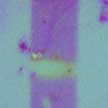 Traditional CMOS technology cannot be directly merged with graphene applications. Photo- and electron-based lithographies, which are the main processess in today's semiconductor industry, requires use of polymers and harsh liquids that can drastically alter the initial properties of graphene. Thus graphene requires the development of novel processing technologies.
A international team of researchers now has developed a method for direct, on-the-fly reconstruction of graphene properties.
Traditional CMOS technology cannot be directly merged with graphene applications. Photo- and electron-based lithographies, which are the main processess in today's semiconductor industry, requires use of polymers and harsh liquids that can drastically alter the initial properties of graphene. Thus graphene requires the development of novel processing technologies.
A international team of researchers now has developed a method for direct, on-the-fly reconstruction of graphene properties.
Jul 30th, 2018
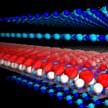 An international team of researchers has discovered a new mechanism for controlling electronic devices using molecules. The ferroelectric ordering of polar molecules attached to the edge of graphene can be toggle-switched by an electrostatic gate and can be used for memory devices and sensors. For this work, the team sandwiched graphene layers in hexagonal boron nitride crystals. The trick is to control the edge chemistry. The researchers attached different atoms to the graphene edges, before exposing them to water vapor and other polar molecules.
An international team of researchers has discovered a new mechanism for controlling electronic devices using molecules. The ferroelectric ordering of polar molecules attached to the edge of graphene can be toggle-switched by an electrostatic gate and can be used for memory devices and sensors. For this work, the team sandwiched graphene layers in hexagonal boron nitride crystals. The trick is to control the edge chemistry. The researchers attached different atoms to the graphene edges, before exposing them to water vapor and other polar molecules.
Jul 27th, 2018
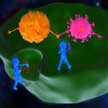 Scientists propose a novel tumor treatment strategy for simultaneous ablating tumor and inhibiting infection by using specially designed biodegradable metal-organic frameworks (MOFs). The strategy of simultaneous eradicating tumor tissue and inhibiting infection can inspire the researchers with novel progressing technologies for tumor therapy. This novel strategy opens the door for developing the nanomaterials that are sensitive to microwave irradiation and inhibiting infection to achieve noninvasive combined treatment in clinical practice.
Scientists propose a novel tumor treatment strategy for simultaneous ablating tumor and inhibiting infection by using specially designed biodegradable metal-organic frameworks (MOFs). The strategy of simultaneous eradicating tumor tissue and inhibiting infection can inspire the researchers with novel progressing technologies for tumor therapy. This novel strategy opens the door for developing the nanomaterials that are sensitive to microwave irradiation and inhibiting infection to achieve noninvasive combined treatment in clinical practice.
Jul 23rd, 2018
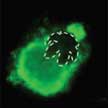 Research on micro- and nanomachines has advanced from the observation and understanding of basic motion behavior to the constantly improving capabilities of performing complex tasks. This ranges from interaction with bacteria to propulsion based on cells and in vivo medical applications. A review looks at the applications of micro- and nanomachines in living biosystems from two aspects: the interaction of micro/nanomachines with other microscopic organisms or biological units, and the efforts toward application of micro/nanomachines in human body.
Research on micro- and nanomachines has advanced from the observation and understanding of basic motion behavior to the constantly improving capabilities of performing complex tasks. This ranges from interaction with bacteria to propulsion based on cells and in vivo medical applications. A review looks at the applications of micro- and nanomachines in living biosystems from two aspects: the interaction of micro/nanomachines with other microscopic organisms or biological units, and the efforts toward application of micro/nanomachines in human body.
Jul 5th, 2018
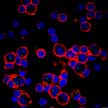 Programmable nucleic acid nanoparticle (NANP) technology is a relatively new field that has already given rise to a host of self-assembling nucleic acid nanoparticles that are increasingly viewed as promising biological materials for medical applications. Programmable self-assembling NANPs are amenable to chemical modifications, control over functionalization, and consistent batch-to-batch formulation. Researchers present the first detailed and systematic study that involved 25 most representative NANPs, originally designed by different groups, screened for the induction of 29 different cytokines.
Programmable nucleic acid nanoparticle (NANP) technology is a relatively new field that has already given rise to a host of self-assembling nucleic acid nanoparticles that are increasingly viewed as promising biological materials for medical applications. Programmable self-assembling NANPs are amenable to chemical modifications, control over functionalization, and consistent batch-to-batch formulation. Researchers present the first detailed and systematic study that involved 25 most representative NANPs, originally designed by different groups, screened for the induction of 29 different cytokines.
Jun 25th, 2018
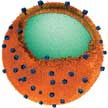 Cell membrane coating is a platform technology that presents a facile top-down method for designing nanocarriers with surfaces that directly replicate the highly complex functionalities necessary for effective biointerfacing. This new class of biomimetic nanoparticles combines the advantages of both natural and artificial nanomaterials. Cell membrane-coated nanoparticles are characterized by a synthetic nanoparticulate core cloaked by a layer of natural cell membrane.
Cell membrane coating is a platform technology that presents a facile top-down method for designing nanocarriers with surfaces that directly replicate the highly complex functionalities necessary for effective biointerfacing. This new class of biomimetic nanoparticles combines the advantages of both natural and artificial nanomaterials. Cell membrane-coated nanoparticles are characterized by a synthetic nanoparticulate core cloaked by a layer of natural cell membrane.
Jun 21st, 2018
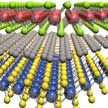 A new paper reviews the studies to date that have addressed the toxicity of 2D materials, particularly emphasizing the preparation methods and resulting physicochemical properties that dictate their interactions with biological systems. In addition, due to its importance in determining exposure risk, this review summarizes key results from the literature concerning the environmental fate of 2D materials. The authors hope that a thorough understanding of these issues will inform ongoing efforts to realize the design of safer 2D materials.
A new paper reviews the studies to date that have addressed the toxicity of 2D materials, particularly emphasizing the preparation methods and resulting physicochemical properties that dictate their interactions with biological systems. In addition, due to its importance in determining exposure risk, this review summarizes key results from the literature concerning the environmental fate of 2D materials. The authors hope that a thorough understanding of these issues will inform ongoing efforts to realize the design of safer 2D materials.
Jun 19th, 2018
 Spider silk fibers show nature's most outstanding mechanical properties, for example, excellent tensile strength and elasticity, and remarkable protein sequence structure. So far, it has remained completely unidentified how the mechanical properties of spider silk fibers effectively contribute to the performance of a piezoelectric nanogenerator. Now, researchers have successfully demonstrated by Piezoresponse Force Microscopy experiment that natural spider silk fibers have a definite vertical (out-of-plane) piezoelectric coefficient.
Spider silk fibers show nature's most outstanding mechanical properties, for example, excellent tensile strength and elasticity, and remarkable protein sequence structure. So far, it has remained completely unidentified how the mechanical properties of spider silk fibers effectively contribute to the performance of a piezoelectric nanogenerator. Now, researchers have successfully demonstrated by Piezoresponse Force Microscopy experiment that natural spider silk fibers have a definite vertical (out-of-plane) piezoelectric coefficient.
Jun 14th, 2018
 Traditional CMOS technology cannot be directly merged with graphene applications. Photo- and electron-based lithographies, which are the main processess in today's semiconductor industry, requires use of polymers and harsh liquids that can drastically alter the initial properties of graphene. Thus graphene requires the development of novel processing technologies.
A international team of researchers now has developed a method for direct, on-the-fly reconstruction of graphene properties.
Traditional CMOS technology cannot be directly merged with graphene applications. Photo- and electron-based lithographies, which are the main processess in today's semiconductor industry, requires use of polymers and harsh liquids that can drastically alter the initial properties of graphene. Thus graphene requires the development of novel processing technologies.
A international team of researchers now has developed a method for direct, on-the-fly reconstruction of graphene properties.
 Subscribe to our Nanotechnology Spotlight feed
Subscribe to our Nanotechnology Spotlight feed





